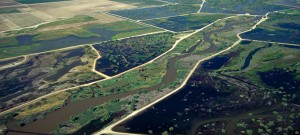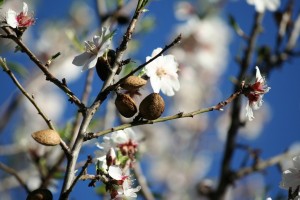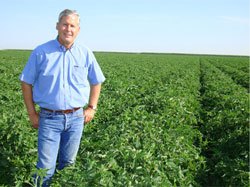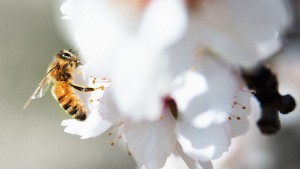By Lori Pottinger
Farmers use the lion’s share of California’s groundwater, but they also do the most to rebuild depleted reserves of this critically important water source. We talked to Graham Fogg—a groundwater expert at UC Davis and a member of the PPIC Water Policy Center research network—about farmland groundwater recharge.
PPIC: How do farms recharge groundwater?
Graham Fogg: Crops don’t use all the water they get through irrigation—a lot seeps into underlying groundwater. Farms also move water from place to place through leaky ditches. The type of irrigation can affect the amount of recharge. For example, with flood irrigation a large fraction can end up back in the aquifer—commonly as much as a third or more. With micro-irrigation, a larger fraction of applied water is taken up by plants, and less ends up recharging groundwater.
Many farmers have adopted micro-irrigation technology. Farmers prefer groundwater when using drip systems because it’s free of sediment that can clog emitters, and groundwater is available whenever the farmer needs to run the system, sometimes multiple times a week. The result is that drip-irrigated farms may pump more groundwater—and they’re not recharging the aquifer as much. It’s an unintended consequence of more efficient irrigation.
PPIC: Are farmers being encouraged to recharge groundwater?
GF: The drought has helped many farmers realize the importance of better groundwater management, and some are figuring out how they can do more recharging on their land. The Sustainable Groundwater Management Act will require better management and balanced water budgets in each basin. This can be achieved with decreased groundwater pumping or increased recharge. In essence, we need to start managing groundwater systems in ways that are similar to surface storage reservoirs and use recharge as a hedge against future drought.
If we continue to rely on irrigation for most of our recharge, it raises questions about groundwater quality. Water that goes through farmland is more likely than non-farm recharge to be tainted with salts, nitrates, and some pesticides.
PPIC: What practices can improve California’s groundwater supplies?
GF: We need to do a variety of things to bank groundwater or face the prospect of having to reduce pumping in dry years and in depleted basins. One solution with high potential is “spreading basins.” These are flat places with the right soils and geological conditions for ponding water so it can infiltrate the aquifer. We need to map these surface and subsurface features and take steps to protect them for recharge purposes.
The Central Valley is not only home to some of our most over-tapped groundwater basins, but also to lands with good potential for fast infiltration. One promising approach is routing excess winter runoff onto farmlands, where irrigation infrastructure can be used to spread the water and recharge groundwater. This practice is gaining much interest from farmers.
We also can manage rivers to encourage recharge, bringing benefits to entire basins. Rivers can recharge groundwater with seepage through their beds. And when rivers overflow their banks, water spreads across the floodplain. Two approaches with high potential to improve groundwater conditions are moving levees back to reconnect rivers with their floodplains, and managing groundwater and surface water as an integrated system. When groundwater systems fill to the point of spilling over, rivers and wetlands stay wet, and there’s a natural exits for groundwater contaminants. Without such exits, these basins will become increasingly polluted over time.









